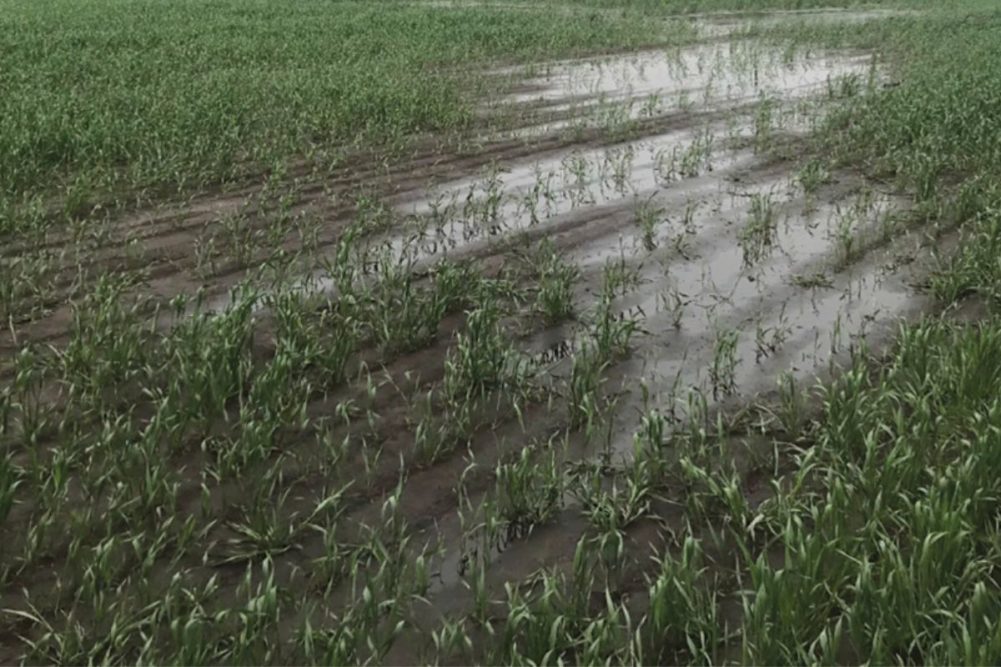WASHINGTON, DC, US — Lingering cool temperatures and wet conditions have put the seeding of major US crops behind the average pace. The 2022 US corn, soybean and spring wheat crops significantly trailed the progress of a year earlier and fell short of the recent five-year averages in the US Department of Agriculture’s Crop Progress report issued May 2.
Corn futures advanced early in Tuesday’s session after the report was released late Monday, but all contracts were 7@10¢ a bushel lower by 11:00 a.m. CDT. Soybean and wheat futures eased but mostly remained above the multi-week lows struck in the previous week.
By May 1, planting of the 2022 corn crop was 14% completed, just a third of 42% seeded a year earlier and less than half of 33% as the 2017-21 average for the date. That’s the slowest pace since 2013. The average of pre-report trade expectations was 16% completion. Major corn-producing states of Illinois, Iowa and Minnesota were the farthest behind the individual five-year averages.
The top corn production state, Iowa, at 9% seeded was a sixth of the previous year’s progress by late April, 62%, and was about a quarter of the five-year average progress for the date, 42%. Around the horn of the corn belt, completion was 28% in Nebraska (37% a year ago, 34% as average), 3% in South Dakota (22%, 13%), 1% in Wisconsin (24%, 14%), 7% in Illinois (50%, 43%), 6% in Indiana (29%, 25%), 3% in Ohio (20%, 16%) and 1% in Michigan (26%, 10%). Seeding had not yet begun in Minnesota, where 54% of the crop had been planted a year ago and 10% as the average, or in North Dakota, which was at 12% a year ago and 5% as the average progress.
Meanwhile, soybean planting progress, which typically occurs later than corn planting, was closer to normal than corn and matched trade expectations but was less than half of the progress a year earlier. The USDA said planting in the 18 states that seeded 96% of the 2021 soybean acreage was 8% completed on May 1, behind 22% a year earlier and 13% as the recent five-year average for the date. Completion was 4% in Iowa (38% a year ago, 17% as the average), 5% in Missouri (9%, 6%), 11% in Kansas (10%, 5%), 19% in Nebraska (18%, 14%), 1% in South Dakota (7%, 4%), 0% in North Dakota (2%, 1%), 0% in Minnesota (20%, 9%), 3% in Wisconsin (14%, 5%), 5% in Illinois (38%, 19%), 3% in Indiana (22%, 13%), 2% in Ohio (16%, 8%) and 3% in Michigan (24%, 8%),
Seeding of the spring wheat crop was at 19% on May 1, the USDA said, less than half of 46% a year earlier and about two thirds of 28% as the 2017-21 average for the date. Seeding had yet to begin in the top production state of North Dakota or in Minnesota. Completion was 28% in Idaho (40% a year ago, 24% as the recent five-year average), 40% in Washington (62%, 41%), 12% in South Dakota (43%, 22%) and 7% in Montana (5%, 3%).
Spring wheat emergence in the six states was 5% on May 1, behind 13% a year earlier and 7% as the recent average.
Meanwhile, the condition of the winter wheat crop held steady. The crop was rated 27% good to excellent as of May 1, unchanged from a week earlier, down sharply from 48% a year ago and the lowest since 1996. The ratings were pulled down by dismal ratings in most hard red winter wheat states, although significant rain fell over much of the region in the past few days, which may be reflected in next week’s Crop Progress report. The winter wheat crop was 23% headed on May 1, compared with 26% a year ago and 29% as the five-year average.






